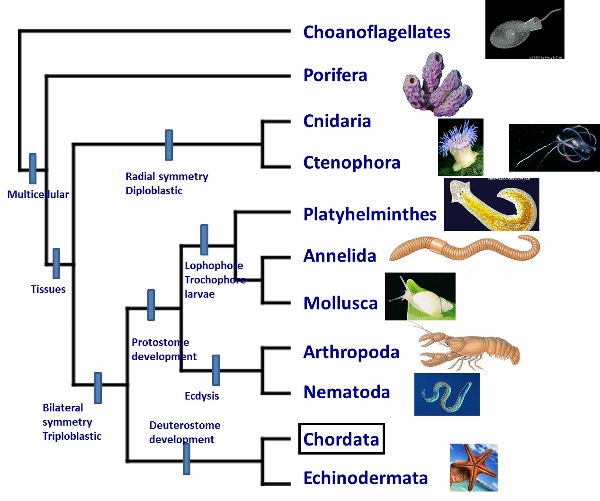What am I?
Welcome to the classification page! Here you will find out more about the ancestors of Galago senegalensis. This can be done by explaining the domain, kingdom, phylum, class, order, family, and genus of this organism, which is found below!
Domain-Eukarya
This organism is composed of complex cells that contain a
nucleus. This domain consists of Plantae, Animalia, Fungi and a lot of
other organisms as well.
The word Eukaryote originates from the Greek word “Eus” which
means true and “Karyon” which stands for nucleus.
Kingdom-Animalia
The characteristics of this kingdom consist of organisms that
are multicellular in nature. They are usually heterotrophs that
possess mitochondria to power their cells. The animals are
usually motile and there is an adaptation of an internal cavity.(Myers,
2001)
Phylum-Chordata
This phylum consists of insects, reptiles, birds and primates.
They possess a dorsal, nerve chord that stretches across the
entire body of the organism with a developed brain. There is
presence of a well-developed coelom and a body with a bilateral
symmetry. The organisms usually possess a bony or cartilaginous
endoskeleton within its body. The phylogeny below shows the
classification of the Animalia kingdom. See if you can follow
the description so far to end up at Galago senegalensis'
phylum Chordata! (Myers, 2001)

Class-Mammalia
The unique characteristics of this class are as follows; three
middle ear bones, mammalian glands, and mammalian hair(Myers, 2001).
The middle ear bones (malleus, incus, and stapes) are used in the
transfer of sound into the inner ear through vibrations of the
eardrum(Myers, 2001). This feature also helps to aid balancing in
mammals. Mammalian hair is evident at some stage in the organism’s
life cycle. It functions as an insulator and acts as a sensor for
touch. The main unique feature of this class that is important to
remember is the mammary glands (Myers, 2001). It is an adapted sweat gland
that is responsible for producing milk that nourishes the new
offspring. (Myers, 2001)
Order-Primates
The animals that occupy this class inhabit arboreal regions
usually. They could be found in tropical locations as well. The
organisms feed on fruits, insects and sometimes meat (Gron,
2008). They are
distinguished by the occurrence of skull, teeth and limbs (Myers,
2000). Collarbones (clavicle) can be visible through the skin of
these primates (Myers, 2000).
Family-Galagidae
The primates in this family are usually small in size and
quick. They possess elongated hind limbs for climbing, and a long
tail. They have ears that are large and motile (Gron, 2008). The
primates are nocturnal in nature and their hands and feet adapt well
to grabbing branches (Gron, 2008)
Genus-Galago
This categorizes the bush babies in general. This constitutes
many of the Galago species that include; G. senegalensis, G.
cameronensis, G. alleni, G. granti, G. gabonensis, G. Orinus and a few
others (Gron, 2008).
Species-Galago senegalensis
It is unclear where the scientific name Galago senegalensis comes from. One idea is that the term 'galago' came from the Wolof word for monkey, golo (Galago, 2013). Wolof is the language of Senegal. Senegalensis means that the bush baby originates in Senegal (Galago, 2013).
This phylogeny shows the family of the Galagidae, according to University of Texas- Austin's Department of Anthropology. Otolemur is different from the other two in that that species has small ears, and a red tint in the fur (Santilli, 2002). The species Euoticus has very claw-like nails, compared to the more dull nails of the other two species on this phylogeny (Santilli, 2002). Click this link to view the website from the university in full, with all of its detailed information! To continue the journey through the life of the bush baby, click above this page on the habitat tab!
